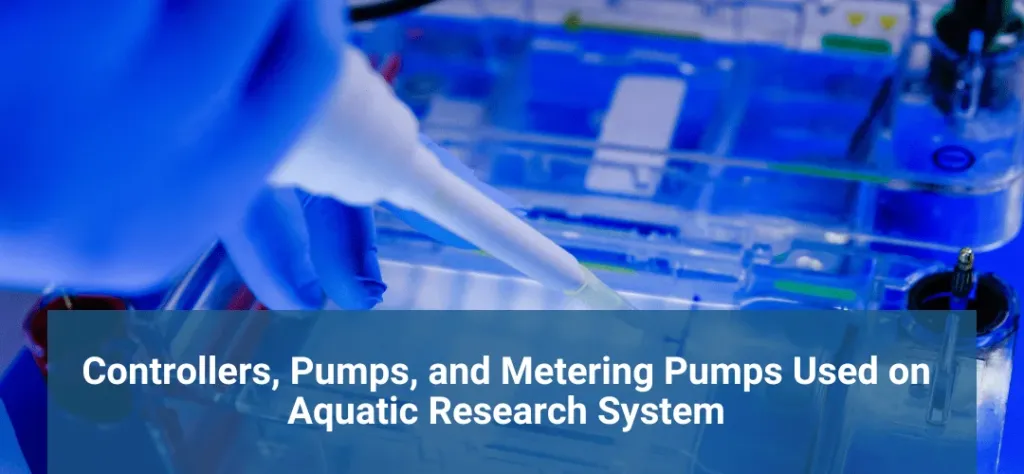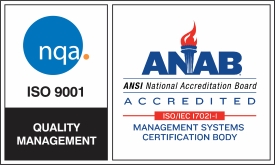Aquatic Controllers, Pumps, and Metering Pumps Used on Aquatic Research System

Environmentally-oriented research systems form the groundwork for numerous scientific investigations into the life of aquatic organisms. Systems like these are designed with great care to mimic natural conditions of habitat, yet providing the animals with a healthy and safe environment while giving researchers the opportunity to investigate behaviors, physiology, and genetics of the organisms under study. Each is equally important for the aquatic controllers, pumps, and dosage pumps maintain water quality and flow-nutrient balances.
The components shall be taken deep into the importance of aquatic research systems, clearly explaining the functions, types, and applications.
The Role of Aquatic Controllers in Aquatic Research Systems
Overview of Aquatic Controllers
The controllers in aquatic systems are typically the hubs of an aquatic research system, coordinating and managing a variety of functions within the system for seamless operations. They are usually charged with monitoring temperature, pH, salinity, dissolved oxygen, and flow rates, and they automatically act to adjust the system as necessary toward maintaining optimum conditions.
Types of Aquatic Controllers
Aquatic research systems can have aquatic controllers of many types, each with different functionality, depending on the nature of the research environment in which a particular system must operate.
- Temperature Controllers: They maintain the temperature of the water within a prescribed range for the sustenance of good health in aquatic organisms.
- pH Controllers: These, in turn, monitor the acidity or alkalinity of water and maintain it within the range desirable for the studied organisms.
- Dissolved Oxygen Controllers: These maintain the amount of oxygen available in the water within the optimum limit, necessary for respiration for aquatic organisms.
- Salinity Controllers: The salinity of both the freshwater and marine systems has always been one of the most important elements. There are controllers of salinity that regulate the right amount of salt concentration present in the water.
Advanced Aquatic Controllers
With the aid of modern technology, modern controllers are capable of much more, other than mere monitoring and adjustments: they can interface with other components to automate feeding, adjust lighting, and even log data.
- SCADA Systems: Supervisory Control and Data Acquisition, or SCADA, systems are common in large aquatic research facilities. Real-time data and control through SCADA allow researchers to monitor and make changes to several parameters remotely.
- PLC Controllers: These are other advanced aquatic controllers that can be programmed for control needs in more complicated research areas. They may also be programmed to execute tasks at specific times and are ideal for specialized needs in research.
Importance of Calibration and Maintenance
This will ensure that aquatic controllers are well calibrated and scheduled maintenance is carried out on them. Even slight deviations in temperature, pH, or dissolved oxygen may completely alter the organisms and render research data invalid.
Pumps in Aquatic Research Systems
Overview of Pumps
Pumps are the workhorses of aquatic research systems, circulating water, maintaining flow rates, and ensuring the even distribution of nutrients and other products. Because many aquatic organisms rely on natural water movement it is an important component to simulate in their care.
Types of Pumps
There are many different types of pumps utilized around aquatic research systems for various purposes.
- Centrifugal Pumps: This is the most common form of pump used in aquatic systems. Centrifugal pumps can deal with large volumes of water and thus provide good general water circulation, which is commonly utilized in RAS.
- Peristaltic Pumps: On the other hand, these pumps can manage small volumes of fluids at a very high degree of precision. They are normally used for the dosing of chemicals, feeding nutrients, and adding trace elements to the water.
- Diaphragm Pumps: These have the capabilities to handle corrosive fluids, thus can be installed in systems that require the addition of chemicals or any other reactive substance.
- Submersible Pumps: Submersible pumps are placed directly in the water and designed for common use in water circulation in tanks or reservoirs. They can be very useful in small-scale systems where space is very limited.
Considerations for Pump Selection
In selecting pumps for an aquatic research system, several factors need to be considered:
- Flow Rate: The flow rate of the pump should be in tune with the size of the system and the quantity of organisms to be supported. A large flow quantity can stress the organisms, and a small flow will cause deterioration in the quality of the water.
- Material Compatibility: There is a need for compatibility in the materials within the pump to the nature of the fluid the pump is going to handle. Examples are pumps found in saltwater systems, which have to be made from materials that would not corrode from saltwater.
- Energy Efficiency: Large-scale systems consider energy consumption a major factor. Energy-efficient pumps can save much in operating costs.
- Noise Levels: Noise levels could be a factor in research environments. It is preferred to use quiet pumps to minimize disturbances, not just for the organisms but also for the researchers.
Maintenance of Pumps
Regular maintenance of the pumps will go a long way to give them durability and make them work effectively. This means checking for leaks, inspecting seals, and cleaning of pump parts. Preventive maintenance shall definitely help avoid high repairing costs and losses caused due to down times.
Metering Pumps in Aquatic Research Systems
Overview of Metering Pumps
Metering pumps are specialized devices designed to deliver precise amounts of fluids into the aquatic system. They are commonly used for dosing chemicals, nutrients, and medications, making them an essential component of any research system that requires strict control over fluid additions.
Types of Metering Pumps
Metering pumps come in various types, each suited for different applications:
- Diaphragm Metering Pumps: These pumps use a diaphragm to control the flow of fluid. They are known for their accuracy and are often used in applications where precise dosing is critical.
- Piston Metering Pumps: Piston metering pumps use a piston mechanism to deliver fluids. They are capable of handling high pressures and are suitable for applications requiring the delivery of small volumes of fluid at high precision.
- Peristaltic Metering Pumps: Peristaltic pumps are ideal for handling delicate or shear-sensitive fluids. They work by compressing and releasing a flexible tube, ensuring that the fluid is not exposed to moving parts.
Applications of Metering Pumps
Metering pumps are used in various applications within aquatic research systems:
- Chemical Dosing: Metering pumps are used to add chemicals such as chlorine, pH adjusters, and dechlorinators to the water. Precise dosing is crucial to maintain water quality and prevent harm to the organisms.
- Nutrient Addition: In systems where plants or algae are part of the research, metering pumps are used to add nutrients to the water. This ensures that the plants receive the necessary nutrients in the right amounts.
- Medication Delivery: When aquatic organisms require medication, metering pumps can deliver the correct dosage directly into the system, ensuring that all organisms receive the treatment evenly.
Factors to Consider When Choosing Metering Pumps
Selecting the right metering pump for an aquatic research system involves considering several factors:
- Accuracy: The pump’s accuracy is crucial for applications requiring precise dosing. Even small deviations can have significant effects on the system.
- Flow Rate: The flow rate should match the system’s requirements. Some applications may require very low flow rates, while others may need higher volumes.
- Chemical Compatibility: The materials used in the pump must be compatible with the chemicals being dosed. This is particularly important in systems where corrosive or reactive chemicals are used.
- Control Options: Advanced metering pumps offer various control options, including manual adjustments, remote control, and integration with automated systems. These features can enhance the pump’s versatility and ease of use.
Maintenance of Metering Pumps
Regular maintenance of metering pumps is essential to ensure their accuracy and reliability. This includes cleaning the pump components, inspecting seals and diaphragms, and calibrating the pump regularly. Proper maintenance can extend the pump’s lifespan and ensure consistent performance.
Integration of Aquatic Controllers, Pumps, and Metering Pumps
System Integration
In a well-designed aquatic research system, controllers, pumps, and metering pumps work together seamlessly to maintain optimal conditions. Integration of these components allows for automated control of various parameters, reducing the need for manual intervention and minimizing the risk of human error.
- Automated Dosing: By integrating metering pumps with aquatic controllers, the system can automatically adjust the dosage of chemicals, nutrients, or medications based on real-time data. This ensures that the system remains within the desired parameters without constant monitoring.
- Flow Control: Pumps can be integrated with flow controllers to maintain consistent water circulation. This is particularly important in systems where precise flow rates are required to simulate natural conditions or ensure even distribution of substances.
- Data Logging and Monitoring: Advanced controllers can log data from pumps and metering pumps, providing valuable insights into the system’s performance. This data can be used to make informed decisions, optimize the system, and identify potential issues before they become problems.
Redundancy and Backup Systems
In critical research environments, redundancy and backup systems are often employed to ensure continuous operation. This may include having backup pumps and controllers that can take over in case of a failure. Redundant systems add an extra layer of security, ensuring that the research is not compromised due to equipment failure.
Customization and Scalability
Aquatic research systems are often customized to meet the specific needs of the research being conducted. This includes selecting the appropriate aquatic controllers, pumps, and metering pumps that match the scale and complexity of the system. Scalability is also an important consideration, as research needs may change over time.
- Modular Systems: Modular systems allow for easy expansion and customization. Components can be added or replaced as needed, making it easier to adapt the system to new research requirements.
- Custom-Built Solutions: In some cases, off-the-shelf components may not meet the specific needs of the research. Custom-built solutions offer the flexibility to design a system that perfectly matches the research objectives.
Aquatic controllers, pumps, and metering pumps are the lifeblood of aquatic research systems, ensuring that these complex environments remain stable and conducive to scientific study. By understanding the functions and applications of these components, researchers can design and maintain systems that support their research objectives while ensuring the well-being of the aquatic organisms.



